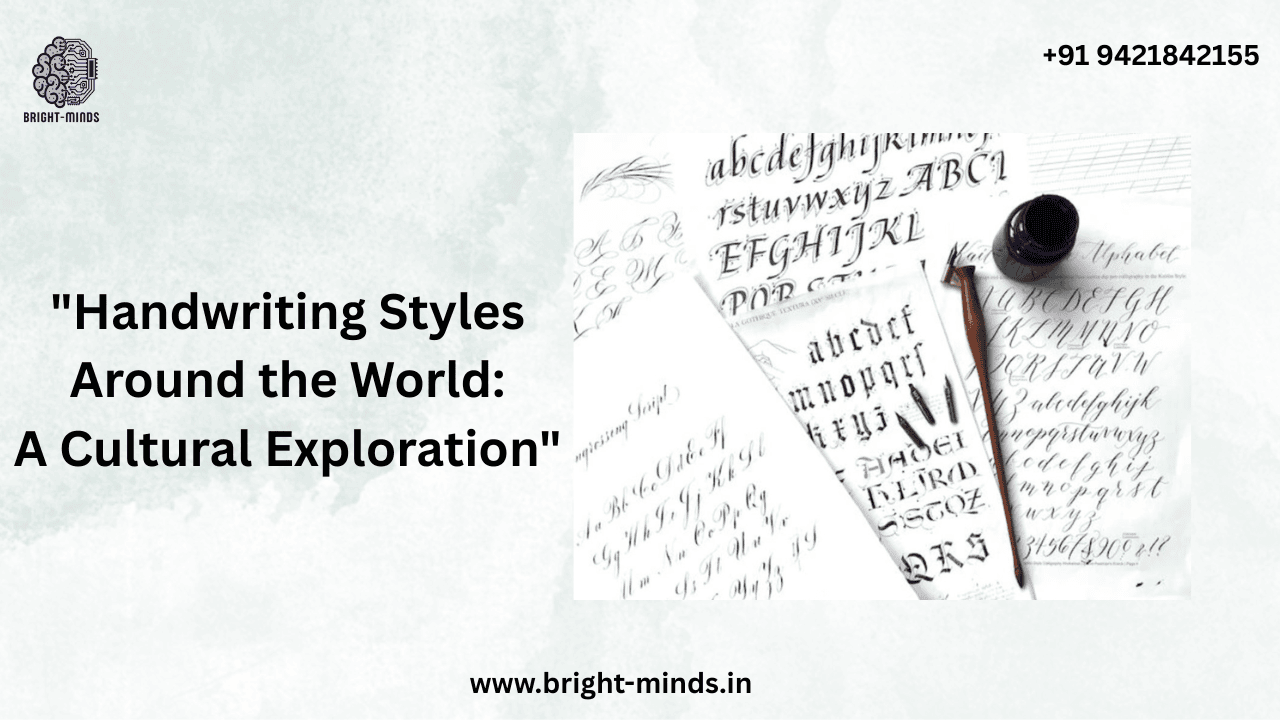Handwriting Styles Around the World: A Cultural Exploration
Handwriting is one of the most personal forms of expression—a reflection of culture, education, and individuality. While digital communication dominates much of our daily lives, the art of handwriting continues to hold deep significance across the globe. Each region, language, and culture has developed its own distinctive way of shaping letters and symbols, revealing stories about history, identity, and the human connection to written words. Exploring handwriting styles around the world is not just about analyzing different scripts—it’s about understanding how people express thought through form, rhythm, and movement.
The Global Story of Writing: Where Handwriting Begins
The journey of handwriting began thousands of years ago, long before the invention of printing presses or keyboards. Ancient civilizations such as Egypt, China, and Mesopotamia laid the foundation of written communication through pictographs, cuneiform, and hieroglyphs. Over time, as languages evolved and societies expanded, so did their handwriting styles.
In the Western world, handwriting took shape with the rise of the Latin alphabet. The Romans developed cursive scripts for faster communication, which later evolved into the elegant calligraphy of the Middle Ages. In Asia, intricate brushwork shaped by art and philosophy gave rise to beautifully balanced characters. Meanwhile, in the Middle East, Arabic calligraphy became both a spiritual and artistic discipline.
These diverse origins highlight how handwriting reflects not just linguistic needs, but also cultural priorities—precision, beauty, speed, or spirituality—all influencing how people learned and valued writing.
Distinctive Handwriting Styles from Different Regions
Each part of the world has a handwriting tradition shaped by its script, history, and educational systems. Let’s take a closer look at some of the most fascinating examples.
European Elegance: From Cursive to Modern Script
In Europe, handwriting has long been a symbol of refinement and education. The English copperplate script, for instance, gained popularity in the 18th and 19th centuries for its elegant loops and consistent slant, making it a hallmark of formality and beauty. It later inspired Spencerian and Palmer methods in the United States, which focused on rhythm and efficiency in penmanship.
Today, many European countries still emphasize cursive handwriting in schools. French cursive, or “écriture cursive,” is particularly distinctive, known for its fluid, joined letters and uniform style. In Germany, the “Sütterlin” script was once taught widely before being replaced by a more modern Latin form. These scripts are not only functional but serve as a visual identity, linking generations through shared patterns of writing.
Asian Artistry: The Precision of Character Writing
In Asia, handwriting transcends communication—it’s considered an art form. Chinese calligraphy, known as “shūfǎ,” and Japanese “shodō” embody centuries of discipline and aesthetic philosophy. Every stroke carries weight, reflecting balance, emotion, and mindfulness. The tools used—brush, ink, and rice paper—create a meditative connection between the writer and the written word.
In India, the Devanagari script used in Hindi, Marathi, and Sanskrit stands out for its horizontal top line connecting letters. Handwriting in these languages requires precision and rhythm, as the script’s structure is deeply rooted in linguistic tradition. Similarly, scripts like Tamil, Bengali, and Telugu showcase circular, flowing forms that are visually rich and culturally distinct.
In Korea, Hangul is celebrated for its scientific design. Each block of characters represents a syllable, making handwriting both logical and rhythmic. Korean students are often taught to perfect balance and alignment, maintaining aesthetic harmony even in casual writing.
The Flow of Arabic and Persian Scripts
Arabic handwriting is renowned for its artistic fluidity. The script flows from right to left, with each letter connecting in a natural rhythm. Calligraphic forms such as Naskh, Diwani, and Thuluth are not just writing styles—they’re visual expressions of culture, faith, and identity.
In Persian handwriting, elegance takes center stage. The Nastaliq script, often used in Persian poetry, is known for its graceful downward slope and delicate proportions. These handwriting styles around the world showcase how writing can transcend communication to become a form of visual poetry.
Western and American Adaptations: From Type to Personality
As typewriters and later computers entered Western life, handwriting began to evolve again. The once rigid rules of cursive writing gave way to personal expression. In the United States, cursive was once a staple of elementary education, but digital literacy has shifted focus. Yet, many educators and researchers argue that handwriting remains vital for cognitive development, memory, and creativity.
Modern handwriting in the Western world often reflects individuality rather than conformity. People blend print and cursive, experiment with typography-inspired letterforms, and even revive calligraphy as a form of art therapy and relaxation. The diversity of handwriting in the digital era reflects freedom—an embrace of both tradition and personal style.
The Cultural Significance of Handwriting
Across continents, handwriting carries deep cultural meaning. It connects generations, reflects educational values, and even influences how languages are perceived. In Japan, beautifully handwritten characters demonstrate respect and dedication. In France, neat cursive symbolizes refinement. In Arab cultures, calligraphy embodies spirituality and reverence for language.
Even within the same language, regional handwriting variations tell fascinating stories. For example, the way someone writes English letters can reveal where they were taught. A British student’s cursive “f” may differ from an American one, and a French writer might add artistic flair that mirrors cultural emphasis on aesthetics.
Handwriting also plays a role in identity and emotional expression. Psychologists note that writing by hand activates brain regions linked to creativity and memory, providing a sense of connection between thought and physical action. Around the world, handwritten notes, diaries, and letters continue to carry emotional weight far beyond what typed messages can convey.
Modern Trends and the Future of Handwriting
In today’s digital age, the question arises—does handwriting still matter? The answer is a resounding yes. While digital tools dominate workplaces and classrooms, handwriting remains a fundamental skill linked to cognitive development and communication depth.
Current educational trends show a renewed interest in teaching handwriting as a creative and mindful activity. In Finland, handwriting lessons now include digital penmanship, blending traditional writing with tablet-based practice. In China and Japan, calligraphy continues to be taught as a discipline of patience and self-expression. Meanwhile, in Western countries, the art of modern calligraphy has experienced a resurgence, thanks to social media platforms like Instagram and Pinterest, where enthusiasts share their lettering creations.
The handwriting styles around the world are evolving alongside technology. Digital styluses and handwriting recognition software have given new life to penmanship, merging tradition with innovation. This hybrid future keeps the essence of handwriting alive while adapting to the needs of modern communication.
What Businesses and Educators Can Learn
For companies, understanding handwriting culture can enhance branding and global communication. For instance, personalized handwritten notes in marketing materials create authenticity and emotional connection—something digital text often lacks. Educators can draw inspiration from global handwriting traditions to design creative literacy programs that honor cultural diversity while improving fine motor skills and concentration.
Recognizing handwriting as both an art and a communication tool can encourage mindfulness, patience, and cross-cultural appreciation in professional and educational environments.
The Art of Connection Through Handwriting
In a world rushing toward automation, handwriting remains one of the most human forms of expression. Every loop, curve, and line tells a story—of culture, identity, and connection. Exploring handwriting styles around the world reminds us that while our languages and tools may differ, our desire to communicate beauty and meaning through the written word is universal.
Whether you’re a teacher seeking new ways to engage students, a parent encouraging creativity, or a learner fascinated by global cultures, handwriting offers endless inspiration. Continue your journey with us by exploring our collection of handwriting improvement guides, cultural writing workshops, and creative learning programs that celebrate the diversity of writing across the world.
You may be interested in this:
The World of Colors: Fun Facts About Colors and How They Work

